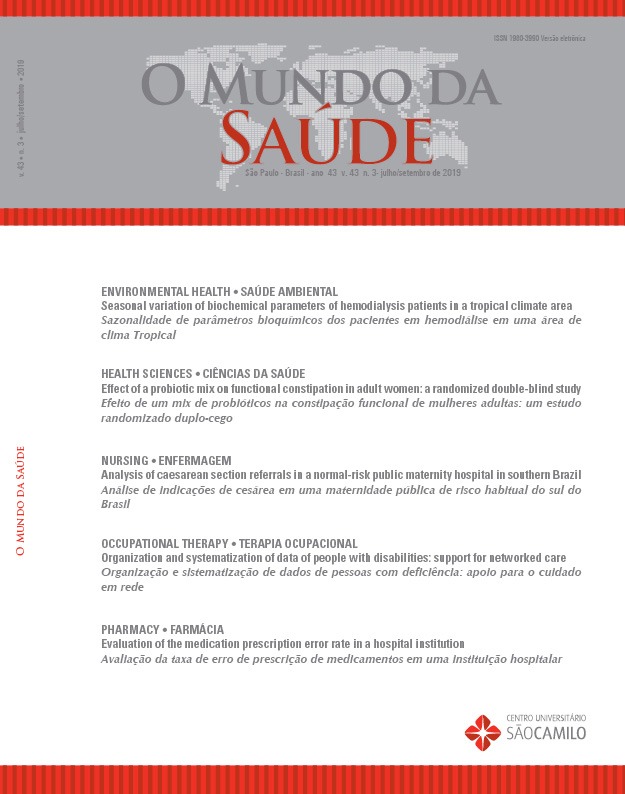The relationship of birthweight with anthropometric indicators in preschool children
DOI:
https://doi.org/10.15343/0104-7809.20194303701712Keywords:
Birthweight, Low birthweight newborn, Anthropometry, Growth, Child developmentAbstract
Birthweight is a significant indicator of childhood survival, representing a risk of death and health complications. Low birthweight newborns (LBW) often have a lower developmental pattern than those born at term and their low birthweight is a significant risk factor for growth impairment during school age. The aim of this study was to associate birthweight with anthropometric indicators in preschool children. This is a cross-sectional study with preschool children enrolled in public day care centers in Taubaté, São Paulo, 2014. The sample size was calculated based on the assumption that nutritional differences between children in the vulnerable and affluent regions were equivalent to 1/3 of the standard deviation of the healthy population’s mean. Adopting a=5% and ß=20%, considering a 20% increase for eventual losses, the final sample was estimated at 350 children. The sampling was probabilistic, with successive draws of the day care centers of the two regions until completing the total sample. 374 children aged 24 to 48 months participated in the study. Children born with LBW had lower weight median z-scores than children born with normal weight, and this difference was statistically significant (p<0.05) for the following indicators: Weight/Height -0.14 (-1.50;+2.12) vs. 0.47 (-2.22;+3.01); Weight/Age: 0.06 (-2.01;+1.80) vs. 0.37 (-2.19;+2.87) and BMI/Age -0.10 (-1.51;+2.11) vs. 0.47 (-2.44;+3.05). Children with LBW had lower median z-scores for weight growth than those born with normal weight, and no difference was found for height/age between groups.






























